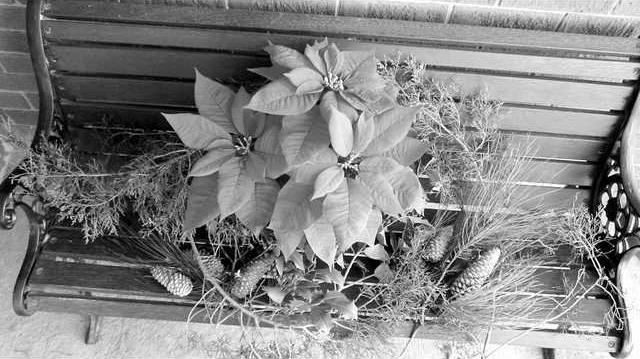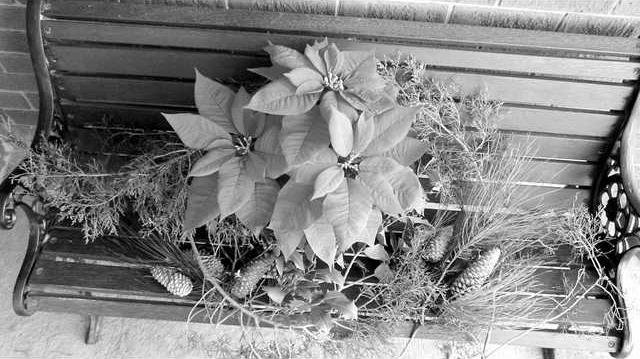Susan’s stuffed dates and roasted pecans
are old, quick Christmas treats
Purchase whole pitted dates and slit one side of each date. Carefully stuff the date with a whole pecan and work the side closed with your fingers. It will be sticky. You may serve as is for a natural snack or roll in powdered sugar. Store in air tight tins lined with plastic wrap and refrigerate leftovers.
I roast pecans in the oven on foil at 225 degrees for about 45 minutes stirring every 10 minutes until slightly browned. For the stuffed dates I do not butter or salt them. To eat the roasted pecans you may roast with butter or margarine while cooking. Salt if desired when removed from the oven. Cool and store in tins or jars at room temperature for several weeks.
Mistletoe was said to have been used by Druid priests 200 years before the birth of Christ in their winter celebrations. They honored the plant since it had no roots yet remained green during the cold months of winter.
The ancient Celtics believed mistletoe to have magical healing powers and used it as an antidote for poison, infertility, and to ward off evil spirits. The plant was also seen as a symbol of peace and it is said that among the Romans, enemies who met under mistletoe would lay down their weapons and hug their enemies.
Scandinavians associated the plant with Frigga, their goddess of love. We may derive the custom of kissing under the mistletoe from this. Those who kissed under the mistletoe had the promise of good luck and joy in the following year.
In the northern part of Europe, Christmas occurred during the middle of winter, when ghosts and demons could be heard howling in the cold winds. Boughs of holly were thought to have magical powers since they stayed green through the harsh winter. Holly was often placed over the doors of homes to drive away evil spirits. Greenery was also brought indoors to refresh the air and brighten moods during the long cold winter.
Legend also has it that holly sprang from the footsteps of Christ as he walked the earth. The pointed leaves were said to represent the crown of thorns Christ wore while on the cross and the red berries symbolized the blood he shed.
Poinsettias were native plants of Mexico and they were named after Joel R. Poinsett, U.S. ambassador to Mexico who brought the plant to America in 1828. Poinsettias were likely used by Mexican Franciscans in their 17th century Christmas celebrations. One legend has it that a young Mexican boy, on his way to visit the village Nativity scene, realized he had no gift for the Christ child. He gathered pretty green branches from along the road and brought them to the church. Though the other children made fun of him, when the leaves were laid at the manger, a beautiful star-shaped flower appeared on each branch. The bright red petals, often mistaken for flowers, are actually the upper leaves or bracts of the plant.
The hanging of the greens in many churches today still use many of these plants from centuries ago to create beauty as we celebrate the birth of our Lord and Savior Jesus Christ.
Hope you enjoy my photo of a lovely red poinsettia, a gift from Jean Rahn and some native cedar, pine and holly from the farm. We wish you a blessed Christmas full of joy and peace from Historic Effingham Society. Please keep our soldiers and their families in your thoughts and prayers as they may be separated from each other while keeping our nation safe. We thank them and their families for their great sacrifice and service.
As we enjoy these days with family let us also pray for our world to live in peace and harmony in the New Year to come.
This was written by Susan Exley of Historic Effingham Society. If you have photos, comments or information to share, contact her at 754-6681 or email her at hesheraldexley@aol.com.








